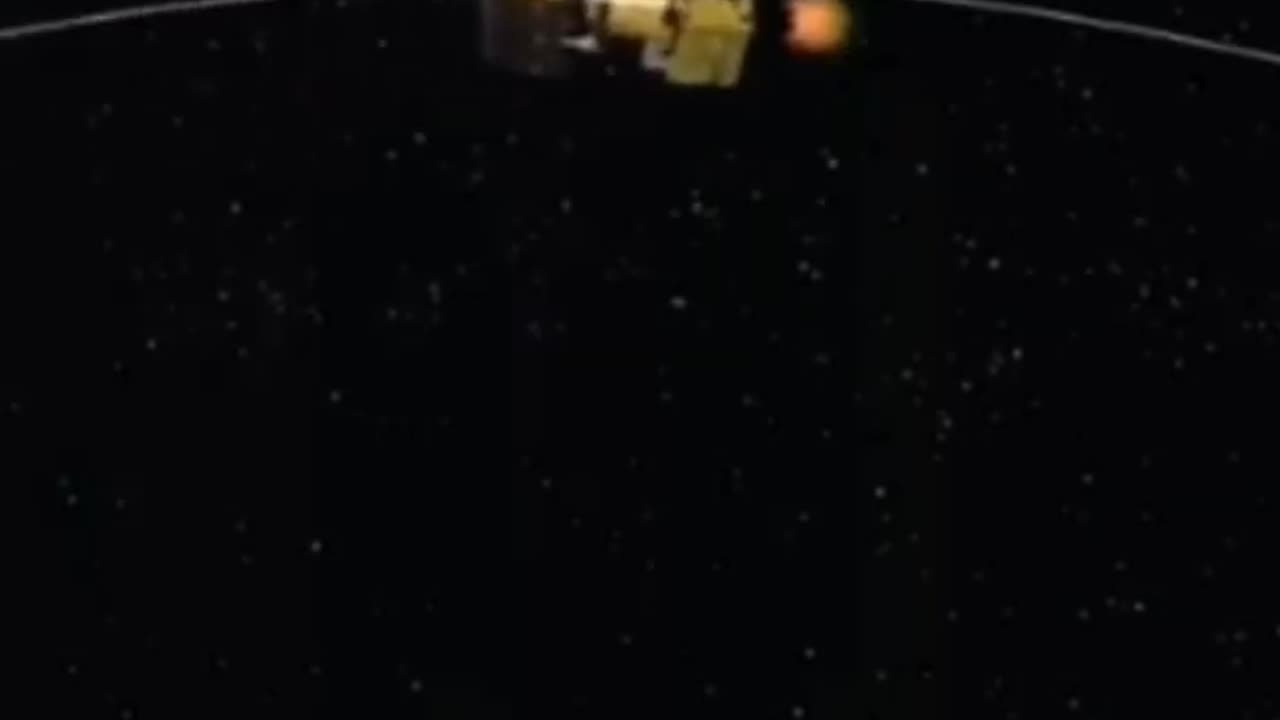Premium Only Content

Chandrayaan 3 soft landing on moon
Chandrayaan 3 soft landing on moon, proud for Indian , space mission, successful.
Chandrayaan-3 is the third of an ongoing series of outer space missions by the Indian Space Research Organization (ISRO) for the exploration of the Moon. The program incorporates a lunar orbiter, an impactor, a soft lander and a rover spacecraft.
The lunar South Pole region holds particular interest for scientific exploration due to studies that show large amounts of ice there. Mountainous terrain and unpredictable lighting conditions not only protect the ice from melting, but also make landing scientific probes there a challenging undertaking. This ice could contain solid-state compounds that would normally melt under warmer conditions elsewhere on the Moon, compounds which could provide insight into lunar, Earth, and Solar System history. Ice could also be used as a source of drinking water and hydrogen for fuel and oxygen for future manned missions and outposts.[15][16]
The European Space Tracking network (ESTRACK), operated by the European Space Agency (ESA), is supporting the mission. Under a new cross-support arrangement, ESA tracking support could be provided for upcoming ISRO missions such as those of India's first human spaceflight programme, Gaganyaan, and the Aditya-L1 solar research mission. In return, future ESA missions will receive similar support from ISRO's own tracking stations.[17]Chandrayaan-3 is the third of an ongoing series of outer space missions by the Indian Space Research Organization (ISRO) for the exploration of the Moon. The program incorporates a lunar orbiter, an impactor, a soft lander and a rover spacecraft.
The lunar South Pole region holds particular interest for scientific exploration due to studies that show large amounts of ice there. Mountainous terrain and unpredictable lighting conditions not only protect the ice from melting, but also make landing scientific probes there a challenging undertaking. This ice could contain solid-state compounds that would normally melt under warmer conditions elsewhere on the Moon, compounds which could provide insight into lunar, Earth, and Solar System history. Ice could also be used as a source of drinking water and hydrogen for fuel and oxygen for future manned missions and outposts.[15][16]
The European Space Tracking network (ESTRACK), operated by the European Space Agency (ESA), is supporting the mission. Under a new cross-support arrangement, ESA tracking support could be provided for upcoming ISRO missions such as those of India's first human spaceflight programme, Gaganyaan, and the Aditya-L1 solar research mission. In return, future ESA missions will receive similar support from ISRO's own tracking stations.[17]Chandrayaan-3 is the third of an ongoing series of outer space missions by the Indian Space Research Organization (ISRO) for the exploration of the Moon. The program incorporates a lunar orbiter, an impactor, a soft lander and a rover spacecraft.
The lunar South Pole region holds particular interest for scientific exploration due to studies that show large amounts of ice there. Mountainous terrain and unpredictable lighting conditions not only protect the ice from melting, but also make landing scientific probes there a challenging undertaking. This ice could contain solid-state compounds that would normally melt under warmer conditions elsewhere on the Moon, compounds which could provide insight into lunar, Earth, and Solar System history. Ice could also be used as a source of drinking water and hydrogen for fuel and oxygen for future manned missions and outposts.[15][16]
The European Space Tracking network (ESTRACK), operated by the European Space Agency (ESA), is supporting the mission. Under a new cross-support arrangement, ESA tracking support could be provided for upcoming ISRO missions such as those of India's first human spaceflight programme, Gaganyaan, and the Aditya-L1 solar research mission. In return, future ESA missions will receive similar support from ISRO's own tracking stations.[17]Chandrayaan-3 is the third of an ongoing series of outer space missions by the Indian Space Research Organization (ISRO) for the exploration of the Moon. The program incorporates a lunar orbiter, an impactor, a soft lander and a rover spacecraft.
The lunar South Pole region holds particular interest for scientific exploration due to studies that show large amounts of ice there. Mountainous terrain and unpredictable lighting conditions not only protect the ice from melting, but also make landing scientific probes there a challenging undertaking. This ice could contain solid-state compounds that would normally melt under warmer conditions elsewhere on the Moon, compounds which could provide insight into lunar, Earth, and Solar System history. Ice could also be used as a source of drinking water and hydrogen for fuel and oxygen for future manned missions and outposts.[15][16]
The European Space Tracking network (ESTRACK), operated by the European Space Agency (ESA), is supporting the mission. Under a new cross-support arrangement, ESA tracking support could be provided for upcoming ISRO missions such as those of India's first human spaceflight programme, Gaganyaan, and the Aditya-L1 solar research mission. In return, future ESA missions will receive similar support from ISRO's own tracking stations.[17] Chandrayaan-3 is the third of an ongoing series of outer space missions by the Indian Space Research Organization (ISRO) for the exploration of the Moon. The program incorporates a lunar orbiter, an impactor, a soft lander and a rover spacecraft.
The lunar South Pole region holds particular interest for scientific exploration due to studies that show large amounts of ice there. Mountainous terrain and unpredictable lighting conditions not only protect the ice from melting, but also make landing scientific probes there a challenging undertaking. This ice could contain solid-state compounds that would normally melt under warmer conditions elsewhere on the Moon, compounds which could provide insight into lunar, Earth, and Solar System history. Ice could also be used as a source of drinking water and hydrogen for fuel and oxygen for future manned missions and outposts.[15][16]
The European Space Tracking network (ESTRACK), operated by the European Space Agency (ESA), is supporting the mission. Under a new cross-support arrangement, ESA tracking support could be provided for upcoming ISRO missions such as those of India's first human spaceflight programme, Gaganyaan, and the Aditya-L1 solar research mission. In return, future ESA missions will receive similar support from ISRO's own tracking stations.[17]Chandrayaan-3 is the third of an ongoing series of outer space missions by the Indian Space Research Organization (ISRO) for the exploration of the Moon. The program incorporates a lunar orbiter, an impactor, a soft lander and a rover spacecraft.
The lunar South Pole region holds particular interest for scientific exploration due to studies that show large amounts of ice there. Mountainous terrain and unpredictable lighting conditions not only protect the ice from melting, but also make landing scientific probes there a challenging undertaking. This ice could contain solid-state compounds that would normally melt under warmer conditions elsewhere on the Moon, compounds which could provide insight into lunar, Earth, and Solar System history. Ice could also be used as a source of drinking water and hydrogen for fuel and oxygen for future manned missions and outposts.[15][16]
The European Space Tracking network (ESTRACK), operated by the European Space Agency (ESA), is supporting the mission. Under a new cross-support arrangement, ESA tracking support could be provided for upcoming ISRO missions such as those of India's first human spaceflight programme, Gaganyaan, and the Aditya-L1 solar research mission. In return, future ESA missions will receive similar support from ISRO's own tracking stations.[17]Chandrayaan-3 is the third of an ongoing series of outer space missions by the Indian Space Research Organization (ISRO) for the exploration of the Moon. The program incorporates a lunar orbiter, an impactor, a soft lander and a rover spacecraft.
The lunar South Pole region holds particular interest for scientific exploration due to studies that show large amounts of ice there. Mountainous terrain and unpredictable lighting conditions not only protect the ice from melting, but also make landing scientific probes there a challenging undertaking. This ice could contain solid-state compounds that would normally melt under warmer conditions elsewhere on the Moon, compounds which could provide insight into lunar, Earth, and Solar System history. Ice could also be used as a source of drinking water and hydrogen for fuel and oxygen for future manned missions and outposts.[15][16]
The European Space Tracking network (ESTRACK), operated by the European Space Agency (ESA), is supporting the mission. Under a new cross-support arrangement, ESA tracking support could be provided for upcoming ISRO missions such as those of India's first human spaceflight programme, Gaganyaan, and the Aditya-L1 solar research mission. In return, future ESA missions will receive similar support from ISRO's own tracking stations.[17]Chandrayaan-3 is the third of an ongoing series of outer space missions by the Indian Space Research Organization (ISRO) for the exploration of the Moon. The program incorporates a lunar orbiter, an impactor, a soft lander and a rover spacecraft.
The lunar South Pole region holds particular interest for scientific exploration due to studies that show large amounts of ice there. Mountainous terrain and unpredictable lighting conditions not only protect the ice from melting, but also make landing scientific probes there a challenging undertaking. This ice could contain solid-state compounds that would normally melt under warmer conditions elsewhere on the Moon, compounds which could provide insight into lunar, Earth, and Solar System history. Ice could also be used as a source of drinking water and hydrogen for fuel and oxygen for future manned missions and outposts.[15][16]
The European Space Tracking network (ESTRACK), operated by the European Space Agency (ESA), is supporting the mission. Under a new cross-support arrangement, ESA tracking support could be provided for upcoming ISRO missions such as those of India's first human spaceflight programme, Gaganyaan, and the Aditya-L1 solar research mission. In return, future ESA missions will receive similar support from ISRO's own tracking stations.[17]Chandrayaan-3 is the third of an ongoing series of outer space missions by the Indian Space Research Organization (ISRO) for the exploration of the Moon. The program incorporates a lunar orbiter, an impactor, a soft lander and a rover spacecraft.
The lunar South Pole region holds particular interest for scientific exploration due to studies that show large amounts of ice there. Mountainous terrain and unpredictable lighting conditions not only protect the ice from melting, but also make landing scientific probes there a challenging undertaking. This ice could contain solid-state compounds that would normally melt under warmer conditions elsewhere on the Moon, compounds which could provide insight into lunar, Earth, and Solar System history. Ice could also be used as a source of drinking water and hydrogen for fuel and oxygen for future manned missions and outposts.[15][16]
The European Space Tracking network (ESTRACK), operated by the European Space Agency (ESA), is supporting the mission. Under a new cross-support arrangement, ESA tracking support could be provided for upcoming ISRO missions such as those of India's first human spaceflight programme, Gaganyaan, and the Aditya-L1 solar research mission. In return, future ESA missions will receive similar support from ISRO's own tracking stations.[17]
-
 33:38
33:38
Brewzle
22 hours agoI Created My First Whiskey Blend!
36.6K11 -
 4:24
4:24
Gun Owners Of America
20 hours agoHere's Our Plan To Overturn Gun Control in 2025
32.1K9 -
 1:16:08
1:16:08
PMG
1 day ago $7.52 earned"Jack Smith cases against Trump DISMISSED! This is YUGE!!"
29.5K -
 56:08
56:08
State of the Second Podcast
22 hours agoWhat does the next 4 years look like for the suppressor market? (Ft. Rugged Suppressors)
88.9K13 -
 29:08
29:08
The Lou Holtz Show
16 hours agoThe Lou Holtz Show Ep 21 | Enes Kanter Freedom: A Voice For Human Rights #podcast
90.3K3 -
 28:31
28:31
America First Policy Institute
23 hours agoAmerica First Policy Institute Gala Donald Trump, Elon Musk & Sylvester Stallone Ignite the Movement
53.3K18 -
 4:36
4:36
BIG NEM
13 hours agoThe Sad Truth About How Our Cannabis is Grown
51.2K21 -
 3:07:08
3:07:08
Price of Reason
18 hours agoMainstream Media FEARS Extinction! Gladiator 2 Review! New DnD SCANDAL!
73.6K12 -
 8:23:44
8:23:44
Fresh and Fit
14 hours agoIsrael-Hezbollah Ceasefire & Reacting To Death Threats On X
178K74 -
 1:11:10
1:11:10
Steve-O's Wild Ride! Podcast
5 days ago $10.58 earnedDusty Slay Went From Selling Pesticides To Having A Netflix Special - Wild Ride #244
64.9K3